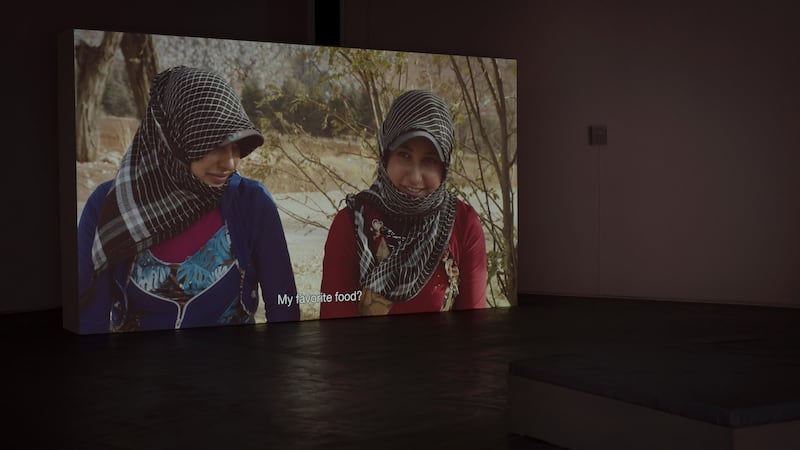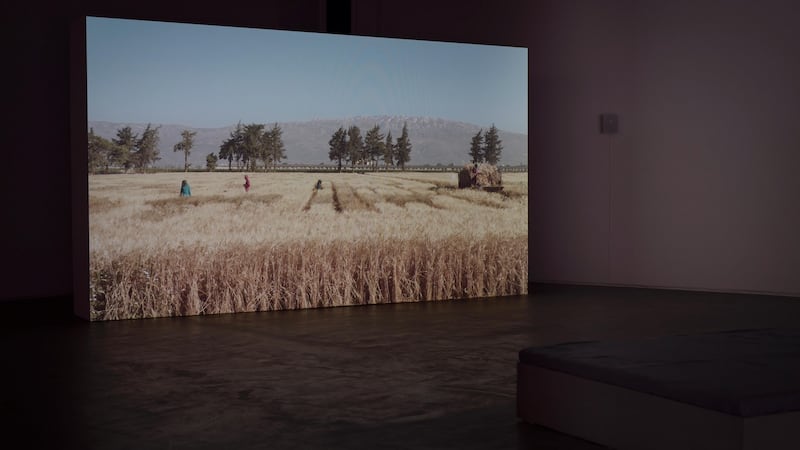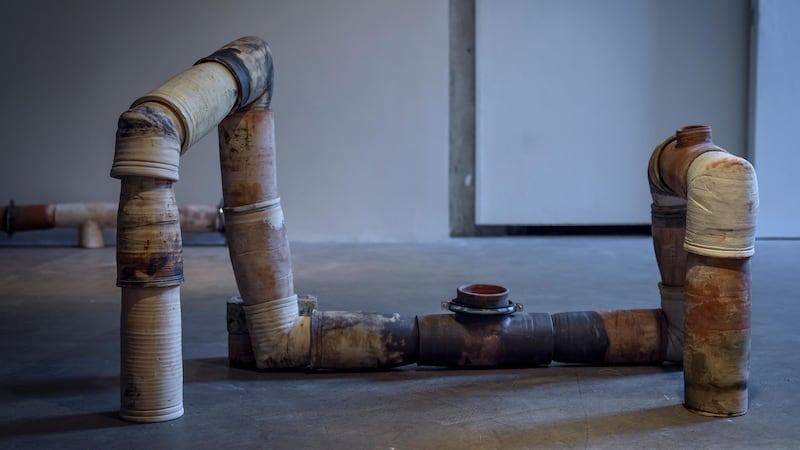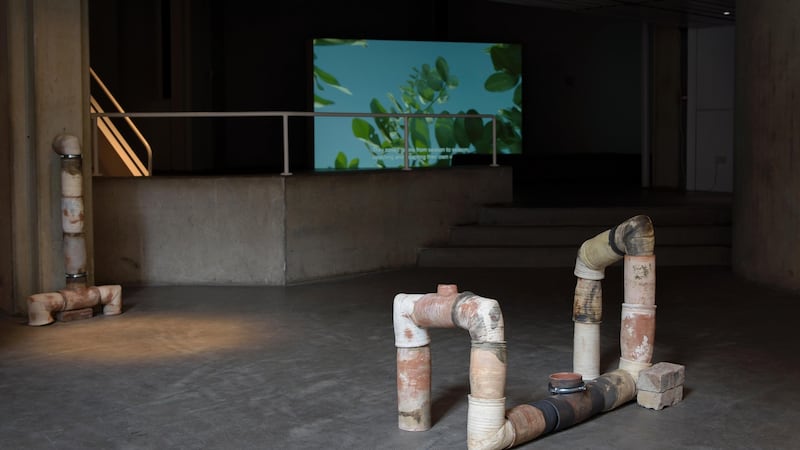Jumana Manna: Wild Relatives
★★★★☆
Douglas Hyde Gallery, Trinity College, Dublin
Jumana Manna's film Wild Relatives hinges on an unlikely connection between two very different locations or, as she terms them, "two distant geographies," an Arctic Ocean island and a section of the Bekaa Valley in Lebanon.
The Norwegian archipelago of Svalbard is home not only to the world’s most northerly town with a population in excess of 1,000 people, Longyearbyan is also the site of the Global Seed Vault. Deep within a sandstone mountain on one of the islands – Spitsbergen – three vaults contain about 2.25 billion seeds at a constant -18 degree Celsius, ensuring the world’s plant populations against all manner of disasters.
Irish artist Michael John Whelan has made a series of works centred on the vault. Other artists have also been drawn to the subject. Manna arrived at it indirectly, by virtue of the fact that Svalbard housed seed from the International Centre for Agricultural Research in the Dry Areas (ICARDA). Established in Lebanon in 1976, ICARDA relocated to Syria the following year.
When, in 2011, the Syrian revolution became an exceptionally nasty, complex civil war exacerbated by a range of outside interests, ICARDA’s Aleppo site fell victim to the conflict. The organisation decided to re-establish the Aleppo stock at geographically similar locations in Lebanon and Morocco, and the best way to do so was to call on the Svalbard backup – the first time this had happened.
Within a few years, ICARDA was in a position to start dispatching a new generation of seeds to Svalbard for storage. The story received widespread media coverage, generally as a feel-good, positive thing, and one can see why, given the steady diet of bad to horrific news emanating from Syria.

This sequence of events forms the spine of a loose narrative in Manna’s film, but she takes a nuanced, layered view of it so that questions and complications proliferate.
For one thing, she lived and studied for a time in Norway and has made work that takes a quizzical look at that country’s virtuous self-image as a benign honest broker. Is the vault, for example, immune from the influence of global agri-business, free of all commercial taint? Who owns the seeds?
Manna is Palestinian and, besides Norway, she has studied in Jerusalem and Los Angeles and is based in Berlin – a personal history that one presumes leaves her familiar with the feeling of being, however comfortable, at one remove from the place and society in which she lives.
Crops' wild relatives are plant species related to cultivated varieties but left to their own devices. It has long been recognised that the evolved traits of wild relatives can benefit cultivated species and farmers have, for example, habitually crossbred them.

In the film, the term presumably applies not only to farming practice but also, metaphorically, to people. We encounter several characters and groups: ICARDA staff, farmer turned taxi driver Youssef (food crops don’t pay so he leases his land as sites for refugee camps), a group of young Syrian women - displaced from their home country, working in the fields for ICARDA, and another Syrian refugee, Walid - an industrious farmer and his family.
Walid seems to embody Manna’s point of view more than any other character, though she is generally understanding to everyone, as witnessed by her warm depiction of the young women who come across as admirably spirited and independent-minded. Manna never goes for sentimentality.
Walid thinks longingly of home but has settled to farming organically in the Bekaa Valley. He is assembling his own modest seed vault, a collection of landraces – that is, species that have adapted to local circumstances particularly effectively. Such seeds are traditionally saved for planting.

Through him, Manna seems to propose an alternative to a failed agricultural strategy - the Green Revolution. That revolution promised much but led to the relentless industrialisation of agriculture, the displacement of people from the land to cities, environmental impoverishment, the loss of plant diversification in favour of increasingly mono-cultural crops and a dependence on vested commercial interests.
In Manna’s account, a certain aridity attends the circular process of obtaining frozen seed stock from Svalbard, growing sample crops and returning a new generation of seed to the vault, worthy as it all is.

Long interested in and having long worked from, archives, she has written of her feeling that the processing involved in archiving “always seems to entail a certain erasure,” and her question is usually what in the way of story or substance has been erased. The antiseptic, technically refined purity of the ICARDA methodology is in marked contrast to the easy informality of Walid’s approach – equally careful and perhaps more knowledgeable though his approach is different.
An adjunct to the film is a series of clay sculptural pieces installed throughout the gallery. Like pipes, or even limbs, these form a series of connective, linking paths, emerging from and disappearing into the fabric of the building, implying a network, a life within.
They have a likeable, unifying energy and warmth, complementing Wild Relatives, which is itself warm in feeling, thoughtful, even meditative, full of implication and suggestion and never dogmatic.











